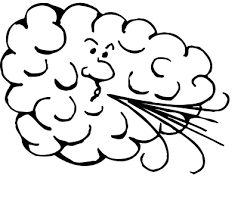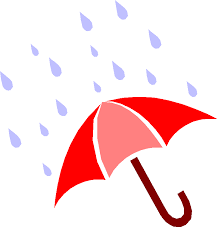Post by Renaud Margry.
Welcome to Laskenglish, the English blog from Laskorain Ikastola. It has been specially designed for our students and it will be developed with everybody's help. If you want us to publish your post contact us at: laskenglish@gmail.com
Showing posts with label DBH 2 students. Show all posts
Showing posts with label DBH 2 students. Show all posts
Tuesday, 17 March 2015
PLANET EARTH AND THE UNIVERSE
Have you ever thought about the universe and the size of the planets and millions of stars there are in the universe? Here you have a video about the dimention of the universe. Stunning!
Tuesday, 23 December 2014
Monday, 15 September 2014
DBH 2: Play and learn about Europe
Hi! Dbh 2 students are going to carry out a project on Europe during this first term, and the first thing they need to do is become familiar with the English names of countries and nationalities. In order to help them, we have selected some games they can play to practise.
- Click here to see a map of the European Union and to learn the name of the member countries.
- Click here to learn the name of the countries and where they are located.
- Click here to see the name of one country and for you to click on the location.
- Click here to drag the countries onto the map (by region)
- Click here to drag the countries onto the map. (level 2)
- Click here to click on the correct location of a country.(level 3)
- Click here to write the first three letters of a country. Then press ENTER and you will see if it is correct or not.
- Click here for sentences about countries and nationalities
Friday, 30 May 2014
QUESTIONNAIRES ON MUSIC PREFERENCES
Hi guys!
Our DBH 4 students are designing fantastic music magazines! They need to write an article on the musical preferences of the students in Laskorain Ikastola, so they need your help, please fulfill these questionnaires.
Thank you very much!
Questionnaire for LH 6 A students (group 1)
Questionnaire for DBH 1 A students (group 2)
Questionnaire for DBH 2 C students (group 3)
Questionnaire for DBH 3 students (Helena's group) (group 4)
Questionnaire for DBH 3C students (group 5)
Questionnaire for Batx 1 A (Maddi's) students (group 6)
Questionnaire for Batx 1 B (Helena's) students (group 7)
Our DBH 4 students are designing fantastic music magazines! They need to write an article on the musical preferences of the students in Laskorain Ikastola, so they need your help, please fulfill these questionnaires.
Thank you very much!
Questionnaire for LH 6 A students (group 1)
Questionnaire for DBH 1 A students (group 2)
Questionnaire for DBH 2 C students (group 3)
Questionnaire for DBH 3 students (Helena's group) (group 4)
Questionnaire for DBH 3C students (group 5)
Questionnaire for Batx 1 A (Maddi's) students (group 6)
Questionnaire for Batx 1 B (Helena's) students (group 7)
Tuesday, 6 May 2014
Medieval clothes
Here are some pictures of medieval clothes. The first picture shows peasant men in their costumes: stockings, tunics, hoods, poulaines...  Now we will show you real medieval robes that peasant men used. These are now shown in a museum:
Now we will show you real medieval robes that peasant men used. These are now shown in a museum:  And we also have a peasant woman's robe:
And we also have a peasant woman's robe: 
Sometimes they were tied in the waist, like this:

To finish with peasants, here's a couple working:

The following show wealthy women in their long gowns with more elaborate headdresses. You can also see knights with their fighting clothes: armours, helmets, shields, spears, swords



These were "poulaines", medieval shoes. They were meade of leather, and as you can see they had pointed toes. Now we will show you real medieval robes that peasant men used. These are now shown in a museum:
Now we will show you real medieval robes that peasant men used. These are now shown in a museum:  And we also have a peasant woman's robe:
And we also have a peasant woman's robe: 
Sometimes they were tied in the waist, like this:

To finish with peasants, here's a couple working:

The following show wealthy women in their long gowns with more elaborate headdresses. You can also see knights with their fighting clothes: armours, helmets, shields, spears, swords




Thursday, 10 April 2014
Food in the Middle Ages
If you want to know about food in the Middle Ages, we recommend visiting the following web pages:
Tuesday, 25 March 2014
HOUSING CONDITIONS IN THE MIDDLE AGES
DBH 2 Students are working on the project titled "History of everyday life". It involves analysing people's lives in three different historical periods: the Middle Ages, the Victorian period and nowadays. At the moment we are looking at their living conditions. What sort of houses did they live in? To answer this question students have read a couple of texts, but in this blog we want to help them with some visual material.
We have found a lot of pictures of medieval houses by surfing the net. Here's a selection of these pictures.
To start with, look at this peasant home with the straw roof and the small windows without glass. Many other medieval huts haven't survived because they were made of timber.
 Notice the fireplace in the middle of the multi-uses room.
Notice the fireplace in the middle of the multi-uses room. 
Notice the difference between the houses above and the following manor houses, with their lattice windows and tiled roofs:



By the way, many of you wondered what a lattice window was. Here's a picture of a lattice window. We hope it will help.

![]()
Here are some exercises for you to practice the vocabulary studied:
We have found a lot of pictures of medieval houses by surfing the net. Here's a selection of these pictures.
 Notice the fireplace in the middle of the multi-uses room.
Notice the fireplace in the middle of the multi-uses room. 
Notice the difference between the houses above and the following manor houses, with their lattice windows and tiled roofs:



By the way, many of you wondered what a lattice window was. Here's a picture of a lattice window. We hope it will help.

Here are some exercises for you to practice the vocabulary studied:
Wednesday, 22 January 2014
SNOW WHITE AND PAST SIMPLE

DBH 2 students are working on a classical fairy tale: Snow White. They have read a scrambled version of the tale and decided on the correct order of the paragraphs. Afterwards, they have analysed the verbs in the text, and classified them into regular and irregular verbs. Finally, they have checked the verbs in their own stories in google docs, to make sure that they have been properly used according to the criteria: narration vs direct speech.
Now they have the opportunity to do some exercises to practise the structure and the use of some of these verbs:
Monday, 16 December 2013
DBH 2: NARRATIVE GENRES
DBH 2 students are working on their second unit, The plot, the poem and the play. As you can imagine, it is a project about literature. And one of the first things we have done is think about the different narrative genres and their features: what are the main events in a detective story? What's the atmosphere like in a horror story? Which are the typical characters in a fairy tale? Where are adventure stories located?
In order to talk about all this, we need vocabulary. Here are some games to practise some of the vocabulary items we have been studying.
If you want to play Click on "start" and then on "proceed":
FAIRY TALES
DETECTIVE STORIES
LOVE STORIES
ADVENTURE STORIES
HORROR STORIES
A BIT OF EVERYTHING
Finally if you want to do a CROSSWORD, click here.
In order to talk about all this, we need vocabulary. Here are some games to practise some of the vocabulary items we have been studying.
If you want to play Click on "start" and then on "proceed":
FAIRY TALES
DETECTIVE STORIES
LOVE STORIES
ADVENTURE STORIES
HORROR STORIES
A BIT OF EVERYTHING
Finally if you want to do a CROSSWORD, click here.
DESCRIBING PLACES IN OUR STORIES
DESCRIBING CHARACTERS IN OUR STORIES
In order to describe characters in our stories we have been learning new adjectives. You can practise some of them in the following exercises:
Sunday, 20 October 2013
COMPARING THE CLIMATE IN DIFFERENT COUNTRIES
At the moment, dbh2 students are working on the different climate types in Europe: mediterranean, continental, highland, cool, oceanic. When describing these climates, they have underlined all those adjectives related to climate and weather. Here are some exercises to practise this vocabulary:



Apart from that, they are learning how to use comparative expressions in order to compare the climate in different countries, regions or cities.
We have designed some exercises in order for them to practise these comparative expressions:



Apart from that, they are learning how to use comparative expressions in order to compare the climate in different countries, regions or cities.
We have designed some exercises in order for them to practise these comparative expressions:
Monday, 30 September 2013
General facts about European countries
Hi, dbh2 students!
Today you have to look for information in order to get the general facts about the country that has been assigned to you. You can do that by surfing the net. You have to look for the capital city, area, population, languages etc... and this post is here to help you.
You can get all that information and a lot more in Wikipedia.
For information about unemployment rates, you can click here.
For information about the economy of each country, simply google: economy of _____ (Belgium, Spain...) and choose the wikipedia page. There, on the right side bar, you will get information about main economic sectors.
Today you have to look for information in order to get the general facts about the country that has been assigned to you. You can do that by surfing the net. You have to look for the capital city, area, population, languages etc... and this post is here to help you.
You can get all that information and a lot more in Wikipedia.
For information about unemployment rates, you can click here.
Monday, 23 September 2013
Describing the location of European cities
Hello.
Our DBH 2 students will have to do a project on a European country, and among other things, they will have to describe the location of the country in Europe, and also the location of the most interesting cities in that country. In order to do this properly, they need to have a good command of prepositions of place. Here are some exercises for dbh 2 students to practise these prepositions and expressions:
Our DBH 2 students will have to do a project on a European country, and among other things, they will have to describe the location of the country in Europe, and also the location of the most interesting cities in that country. In order to do this properly, they need to have a good command of prepositions of place. Here are some exercises for dbh 2 students to practise these prepositions and expressions:
Monday, 16 September 2013
EUROPE: COUNTRIES AND NATIONALITIES
Dbh 2 students will have an exam soon in which they will show that they know how to locate European countries and how to refer to them and their nationalities in English.
If you want to practise, you can click here.
And if you want more, you can do this crossword.
If you want to practise, you can click here.
And if you want more, you can do this crossword.
Tuesday, 14 May 2013
Clothes in the Victorian Period
What made Victorian middle class women's clothes so uncomfortable? This is one of the questions students had to find out about. If you look at the following pictures you will soon understand: This is a corset:  These are hoop petticoats:
These are hoop petticoats: 

Over the hoop, they would wear another petticoat, this time with embroided hems.

It had to be very difficult for these women to eat, sit or even breathe! It's not surprising to hear that they were usually unhealthy, and fainted easily. Can any of you imagine wearing such clothes everyday?
If you are interested in this topic, visit the following page: http://images.google.es/imgres?imgurl=http://www.longago.com/TV141.jpg&imgrefurl=http://www.longago.com/victorian2.html&h=308&w=321&sz=24&hl=es&start=14&um=1&tbnid=UrhMI2ECkDfurM:&tbnh=113&tbnw=118&prev=/images%3Fq%3Dvictorian%2Bhoop%2Bpetticoat%26um%3D1%26hl%3Des
 These are hoop petticoats:
These are hoop petticoats: 

Over the hoop, they would wear another petticoat, this time with embroided hems.

It had to be very difficult for these women to eat, sit or even breathe! It's not surprising to hear that they were usually unhealthy, and fainted easily. Can any of you imagine wearing such clothes everyday?
If you are interested in this topic, visit the following page: http://images.google.es/imgres?imgurl=http://www.longago.com/TV141.jpg&imgrefurl=http://www.longago.com/victorian2.html&h=308&w=321&sz=24&hl=es&start=14&um=1&tbnid=UrhMI2ECkDfurM:&tbnh=113&tbnw=118&prev=/images%3Fq%3Dvictorian%2Bhoop%2Bpetticoat%26um%3D1%26hl%3Des
Monday, 11 February 2013
NEWS IN LEVELS: fantastic site!
Hello
Have you heard of Newsinlevels.com? It's a fantastic site that publishes news for students of English everyday. The news can be read in 3 different levels, the third of which provides the video of the news too. If you devote ten minutes to reading / watching the news everyday, your English will surely improve!!!

Have you heard of Newsinlevels.com? It's a fantastic site that publishes news for students of English everyday. The news can be read in 3 different levels, the third of which provides the video of the news too. If you devote ten minutes to reading / watching the news everyday, your English will surely improve!!!

Monday, 28 January 2013
PAST SIMPLE AND PAST CONTINUOUS
DBH 2 students are involved in a project on literature. More precisely, they are working with short stories. These stories should be written in the past, so we have also been reviewing the main grammar points related to the Past Simple and the Past Continuous. In order to practise the basics of these two tenses, here are some exercises:
- Exercise 1: Affirmative, negative and questions in the past simple
- Exercise 2: Affirmative, negative and questions in the past simple
- Exercise 3: Affirmative, negative and questions in the past simple
- Exercise 4: Past Continuous 1
- Exercise 5: Past continuous 2
- Exercise 6: Translation of Past Simple and Continuous sentences
Sunday, 16 December 2012
STORIES FOR CHRISTMAS
Batx 1 students are learning how to write stories and they have developed some wonderful ones for us to enjoy. In fact, they are going to LH6 to tell them the stories they have written. Have a look at them!
Tuesday, 23 October 2012
Getting information about climate for the leaflet
How much do you know about the climate in your European country? Is it the same in the north or in the south, in the west or in the east of the country?
In order to find out, you can click here.
You'll get a map of Europe. Click on your country, and you will be given general information about the country, but also you will see the name of some cities in CAPITAL LETTERS. Check the location of these cities in the map of the page, and choose two of those cities (try to choose two cities with a very different location). Then click on each of the two cities and you will find a chart with the average temperatures and rainfall in those cities. Be careful, we need the information in Centigrades, not in Fahrenheit degrees. Click on "centigrade" to get the correct numbers. Then PRINT this page and bring it to the following class. If you haven't got a printer, copy the chart with the numbers.
You will use this information for your leaflet: you will write a paragraph in which you will compare the climate in both cities, considering the different seasons (summer, winter, autumn or spring) or months. You will use comparative and superlative adjectives in a variety of structures (see book, page 23)
In order to find out, you can click here.
You'll get a map of Europe. Click on your country, and you will be given general information about the country, but also you will see the name of some cities in CAPITAL LETTERS. Check the location of these cities in the map of the page, and choose two of those cities (try to choose two cities with a very different location). Then click on each of the two cities and you will find a chart with the average temperatures and rainfall in those cities. Be careful, we need the information in Centigrades, not in Fahrenheit degrees. Click on "centigrade" to get the correct numbers. Then PRINT this page and bring it to the following class. If you haven't got a printer, copy the chart with the numbers.
You will use this information for your leaflet: you will write a paragraph in which you will compare the climate in both cities, considering the different seasons (summer, winter, autumn or spring) or months. You will use comparative and superlative adjectives in a variety of structures (see book, page 23)
Subscribe to:
Posts (Atom)




